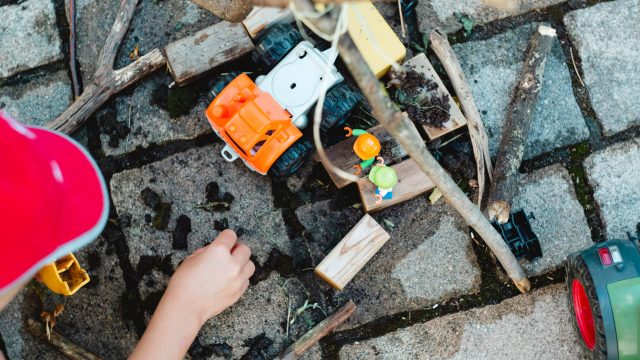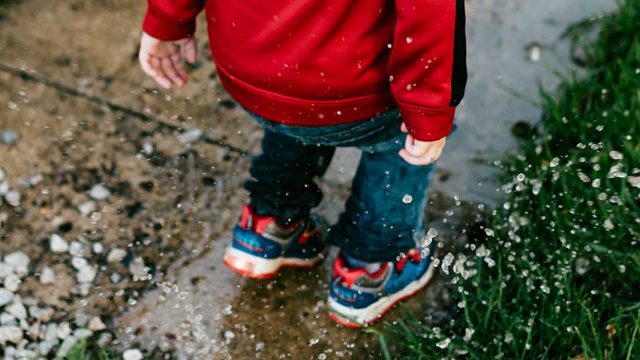I always imagined that staying at home with my sweet baby boy would be a dream come true. However, as I look back and think about it, I can see that I was at a complete loss much of the time. I was grasping at straws, trying to control everything by making spreadsheets of breastfeeding and diapering times, and even going to the extreme of charting his naps. I’m totally serious… I have graphs to show the times he fell asleep, when he woke up and notes about the outliers. I approached parenting much as I had done anything else in my life. I had learned in school that if I studied, read all of the books, and went to all of the right classes, I could ace anything. So that’s precisely what I did. I read “What to Expect when you’re expecting” and about ten other birthing and parenting classes, I went to Lamaze class, Infant First-Aid and Breastfeeding class, I made the Babies R Us Registry and bought all of the right materials. So why was I awake at 3 in the morning with a cracked nipple and a baby that wouldn’t eat??!! Who designed this “Stay-At-Home-Mom” job anyway? One of the books that I did get something out of was called, “Secrets of the Baby Whisperer,” by Tracy Hogg. She has this EASY acronym – Eat, Activity, Sleep, You. So you’re supposed to do each day in that order – feed the baby, provide activities for the baby, put the baby down for a nap, and then do a little something for yourself. Not so bad, really, except that you are supposed to do this EVERY TWO HOURS! The tedium nearly killed me. Don’t get me wrong, I absolutely love babies and couldn’t wait to have one of my very own. But all day long? With no other adults to talk to? This is insane! I had to get out of the house. At last I found a “playgroup” I could join, thanks to my local “Gymboree,” – a place where moms pay money to go play with their babies in groups!
I have since read a very different book, called the “Continuum Concept” by Jean Liedloff, which has helped me to have a glimpse into what parenting could have been like in a more tribal setting. She took me on a journey to the South American jungle, where I started to think I’d happily take the risk of small pox for a chance at a truly human experience. She tells of naked babies carried on backs, mothers mentoring one another through motherhood, and the camaraderie of a village of parents. In fact in these communities, the children don’t “belong” to their parents, but to the tribe. Unlike parents in our society, who are often isolated and alone, fumbling around in the dark with useless parenting manuals and no support. Other countries at least have home health nurses that check on parents of newborns and months of paternity care. However, here in the U.S. we have taken the usual, “do-it-yourself” approach, except that children are not home improvement projects.
Also, in her book, the parents in the jungle don’t “watch” the children. The children naturally learn to come to the parents when they need assistance. Oddly enough, it turns out the this book was the beginning of the “attachment” parenting movement and thus contributed to the recent helicopter parenting paradigm. However, Liedloff has since published an addendum explaining that we got that wrong, too. The idea was not that we should be attached to our babies, but that they are supposed to be attached to us! Argh!
We have created this short circuit. Babies are evolutionarily designed to watch adults and older children to learn about the world around them, but here we are in Gymboree class watching them! By spending every waking hour watching (and charting!) my son’s eating, sleeping and playing habits, I didn’t do anything of interest for him to watch. So he learned that his world consisted of me watching him and attending to his every need. Now at eleven years old, he seems confused when life doesn’t come to him ready-made. He sits down at the dinner table and yells, “why don’t I have a fork!?” rather than just getting one.
So, of course, after reading this book, I cried and beat myself up for doing it all wrong. I blamed myself for not having a more natural birth, for not carrying him as much as I should have, and for spending too much time hovering. I definitely felt ashamed. How could I, a Stanford graduate, have failed this class so miserably?
I have come to discover, though, that I can spend the rest of my parenting days wishing I could go back in time and do it differently, living in this jungle fantasy, or I could just be in the here and now, present with this particular moment. I can feel mad when my child doesn’t show independence, and I get to feel sad when I think of the opportunities for more natural connection that I might have missed. And I get to re-attach to myself now. To my own inner child, to that young parent in me that was truly doing the best she could, to my almost-40-year-old self who sometimes still feels like a child. When I attach to me, I find that my children have space to attach to themselves.
Who is attached to whom?






